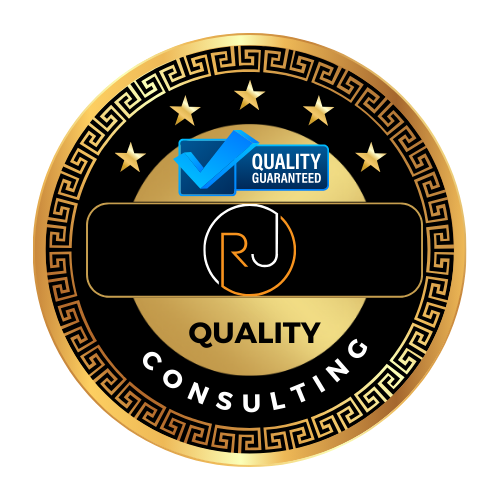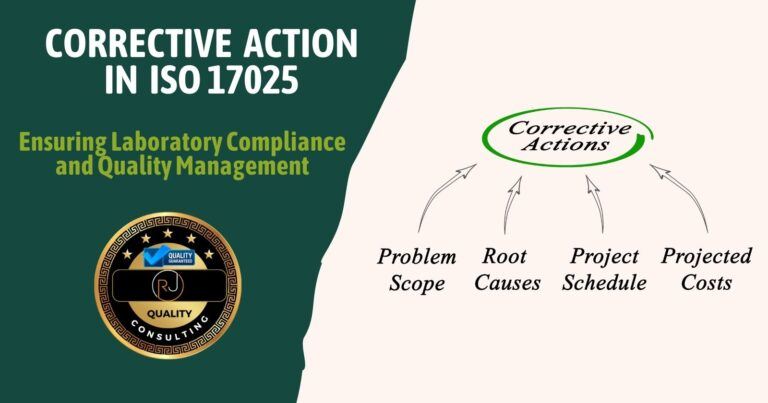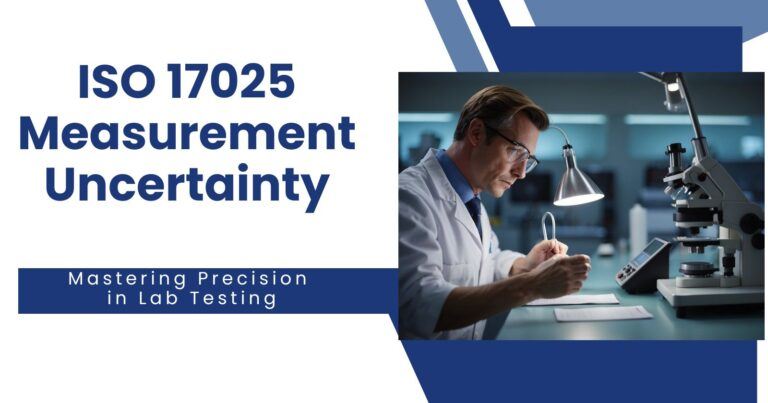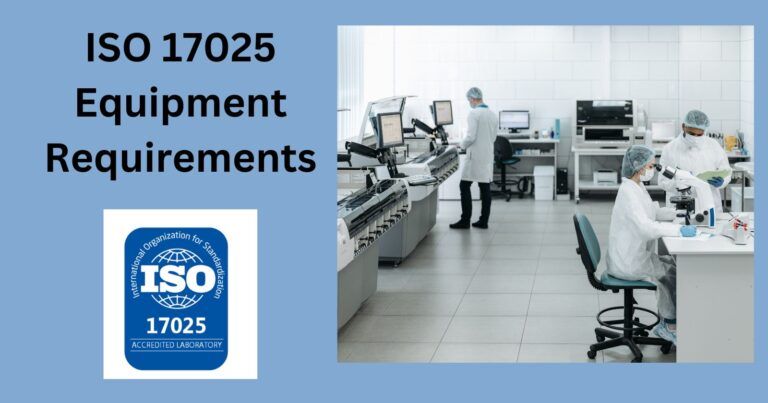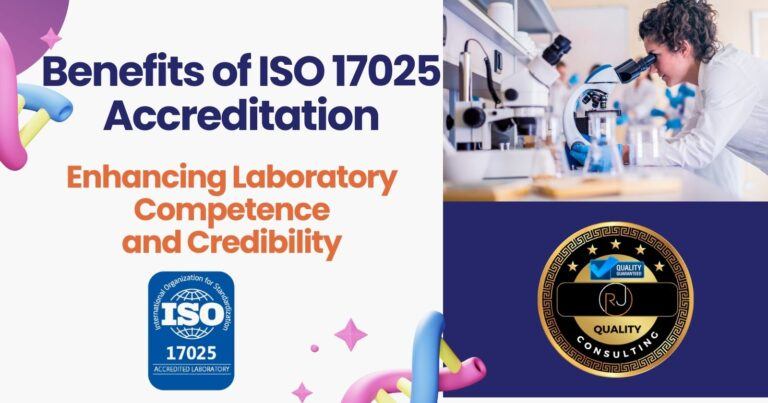ISO 17025 Management Review: Ensuring Laboratory Competence and Compliance
Management reviews are essential in ensuring that an organization’s quality management system (QMS) remains adequate, suitable, and effective over time. They provide a structured process for senior management to engage in strategic planning and evaluate an organization’s performance against its quality objectives. ISO/IEC 17025, the international standard for testing and calibration laboratories, mandates that an ISO 17025 management review is conducted at least annually, though frequency can vary based on the organization’s needs or external factors.

These reviews are not confined to audits or simple feedback discussions. Instead, they serve a higher strategic function, allowing management to make informed decisions about process improvements, resource allocation, and policy adjustments.
Key Takeaways
- Management reviews are a strategic tool, not just an audit.
- ISO/IEC 17025 requires reviews at least yearly.
- Reviews drive decisions on improvements and resources.
Why Perform a Management Review?
Your laboratory’s commitment to quality and compliance is exemplified through the regular performance of management reviews as mandated by ISO/IEC 17025. These reviews are crucial for maintaining a high-functioning Quality Management System. Plus, it is a requirement of the ISO/IEC 17025:2017 standard.
The Benefits and Requirements of Conducting an ISO 17025 Managment Review
Book a FREE 45-Minute Consultation
During the Consultation We Will Give You a Clear Direction and Path For You to Move Forward with Your Certification or Accreditation Goals
Benefits:
- Quality Enhancement: You ensure your lab’s services meet customer expectations.
- Decision-Making: Reviews provide data for informed decisions.
- Operational Insight: Gain a comprehensive overview of your lab’s performance.
Requirements:
- Systematic Evaluation: You are to evaluate the lab’s Quality Management System periodically.
- Record-Keeping: Maintain documentation of all review activities.
- Action Items: Identify areas for improvement and allocate necessary resources.
One of the crucial elements that needs to be performed prior to conducting a Management Review is for the laboratory to conduct an Internal Audit of their ISO 17025 Management system. This is because the result of the internal audit is a required input to Management Review.
One of the best tools a laboratory can use to conduct an effective ISO 17025 internal audit is to use an ISO 17025 Internal Audit Checklist. If you would like to use our free ISO 17025 internal audit checklist, please click the link below for an instant download. It will provide the tool you need to conduct an effective ISO 17025 internal audit or gap analysis.
For a detailed look into the requirements for an ISO 17025 Management Review,
take look at this video. It will give you everything you need to know about the review process and its requirements.
Highlight the Role of Management Reviews in Continuous Improvement and Compliance
Continuous Improvement:
- Close Gaps: Address deficiencies in laboratory operations.
- Update Processes: Tailor methods to evolving standards and technology.
Compliance:
- Standards Adherence: Ensures ongoing alignment with ISO/IEC 17025.
- Regulatory Fulfillment: Meet both national and international regulatory demands.
By conducting these reviews, you will be championing a culture that values precision, accountability, and a commitment to excellence.
Key Components of an ISO 17025 Management Review

In the context of ISO/IEC 17025, your management review should serve as a comprehensive evaluation of your laboratory’s quality management system (QMS).
Outline the Essential Elements That Should Be Covered During a Management Review, Based on ISO/IEC 17025 Guidelines
When you conduct a management review, you must systematically examine various components to ensure your QMS is effective and compliant with ISO/IEC 17025. Key aspects for you to review include:
- Suitability:
- Determine if the current processes and operations are aligned with the activities of your laboratory.
- Assess if the QMS supports and enhances your laboratory’s capability to meet testing and calibration requirements.
- Adequacy:
- Verify that all ISO 17025 requirements are met, including contractual, organizational, and regulatory obligations.
- Ensure you are maintaining the necessary documentation and records as evidence of compliance.
- Effectiveness:
- Examine the outcome of previous management reviews and any subsequent actions taken.
- Evaluate whether the actions implemented have led to improvements and fulfilled set objectives.
- Continuous Improvement:
- Identify areas for potential improvement and the efficiency of actions taken to address previous findings.
- Continuously align the QMS with the ever-evolving objectives and goals of the laboratory for consistent enhancement of operations.
Preparing for the Management Review

As you approach your ISO/IEC 17025 management review, the preparation phase is critical. Your forethought and organization will enable a thorough evaluation of laboratory performance and compliance.
Tips and Strategies for Effective Preparation, Including Gathering Necessary Data and Documentation
Create a Comprehensive Checklist: Start with a clear list of what’s needed. This should include:
- Mandatory input review items as specified by ISO/IEC 17025
- Previous management review records
- Internal and external audit reports
This checklist will serve as the roadmap for the entire preparation process and ensure you do not miss any crucial documentation.
Identify Responsible Individuals: Assign a process owner who will oversee the collection and analysis of data. Their responsibilities include:
- Ensuring all required documents and records are up to date
- Organizing the data that relates to the management system’s performance
Plan the Review Schedule: Organize management reviews at planned intervals. If you are part of a larger organization, this may involve:
- Scheduling a special meeting within the management circle
- Determining the number of participants based on the organization’s size
Record Keeping: Prepare to document the:
- Decisions and actions taken during the review
- Review materials required for the meeting
Using these strategies, you are armed to perform a comprehensive management review that is well-documented and effective in maintaining the high standards set by ISO/IEC 17025.
Conducting the Management Review

The management review is a critical component of the ISO/IEC 17025 accreditation process. It ensures that all aspects of laboratory operations meet the required standards and are subject to continuous improvement.
Step-by-Step Guide on How to Conduct the Review, Including Who Should Be Involved and What Topics Should Be Discussed
- Schedule the Review:
- Determine a date for the review that aligns with the requirement of conducting it at least once every 12 months.
- You may consider more frequent reviews, especially following significant changes or when establishing a quality management system.
- Identify Participants:
- Involve process owners and key management personnel.
- Depending on your organization’s size, this may include the entire management team or, in smaller companies, potentially the entire staff.
- Compile Review Materials:
- Create a list of documents for review, including previous review minutes, corrective action records, internal audit findings, and customer feedback.
- Conduct Pre-Meeting Preparation:
- Assign roles, such as a facilitator to lead the review and a recorder to document minutes and action items.
- Prepare an agenda that covers all compulsory topics.
- Conduct the Review:
- Discuss mandatory input items such as the suitability of policies and procedures, reports from managerial and supervisory personnel, the outcomes of recent internal audits, corrective and preventive actions, assessments by external bodies, results of inter-laboratory comparisons or ISO 17025 proficiency testing, changes in volume and type of work, customer feedback, and complaints.
- Also, consider the laboratory’s performance and effectiveness, feedback from customers, and staff suggestions.
- Document Decisions and Actions:
- Detail the output record of decisions and actions arising from the review.
- Outline responsibilities and deadlines for any actions decided upon.
- Review Output Records:
- Ensure the recorded decisions address improvements and include commitments to resource allocations where necessary.
Common Challenges and Solutions

In the realm of maintaining the benefits of ISO 17025 accreditation, your management review is crucial. It ensures continuous improvement and compliance, but not without its obstacles.
Address Potential Obstacles in Implementing Effective Management Reviews and Offer Practical Solutions
Challenge 1: Lack of preparedness
- Solution: Develop a robust agenda based on requirement 8.9.2 of ISO/IEC 17025:2017, ensuring all necessary items such as prior reviews and action items are included.
Challenge 2: Identifying and Addressing Risks
- Solution: Utilize a structured risk analysis process to systematically evaluate potential risks, aligning your approach with ISO standard requirements.
Challenge 3: Inconsistent Follow-Up
- Solution: Implement a tracked action item list post-review, with clear responsibilities and deadlines to ensure accountability and completion.
Challenge 4: Stakeholder Engagement
- Solution: Increase engagement by scheduling reviews at convenient times and ensuring all key personnel understand their value.
Challenge 5: Document Control
- Solution: Use document management systems capable of maintaining, tracking, and updating documentation efficiently to support the review process.
Utilizing Management Review Outcomes
In the context of ISO/IEC 17025 management review, the outcomes play a critical role in shaping your laboratory’s strategic trajectory and refining operational processes. They are the pivot around which decisions for future improvement revolve.
Discuss How to Use the Outcomes of Management Reviews for Strategic Planning and Operational Improvement
When you receive the outcomes of a management review, they serve as a comprehensive diagnostic of your laboratory’s current performance against your quality management system. These outcomes should not be viewed as merely a formal record but rather as actionable insights. It is imperative to translate these insights into strategic planning and operational improvement initiatives.
- Strategic Planning: The outcomes often reveal trends and patterns that can influence your lab’s long-term goals. Incorporate these findings into your strategic plan by:
- Prioritizing areas for improvement identified in the management review
- Adjusting your quality objectives to align with the newly identified needs
- Allocating resources to areas that will maximize overall performance and compliance
- Operational Improvement: On the operational front, management review outcomes are instrumental in enhancing the day-to-day functioning of the lab. To do this effectively:
- Develop specific action items based on the review outcomes
- Set measurable goals for operational enhancements
- Implement changes incrementally, monitoring the impact on lab operations regularly
- Effective Use and Decision Making: Your ability to effectively use the management review outcomes is contingent upon clear communication and a systematic approach toward implementing changes. Here are some strategies:
- Disseminate the review findings among key personnel and departments that will be involved in the implementation
- Set clear timelines for each action to be completed and monitor adherence
- Employ a feedback loop to assess the impact of changes and adjust actions as needed
Case Studies and Examples
In this section, you’ll explore how successful management reviews under ISO/IEC 17025 can lead to meaningful improvements for laboratories. Real-world examples will illustrate the tangible benefits of maintaining diligence and adherence to the standard during these reviews.
Provide Real-World Examples or Case Studies of Successful Management Reviews from Various Laboratories
- A Calibration Laboratory’s Journey
Situation: In 2021, a mid-sized calibration laboratory faced challenges in keeping its processes aligned with ISO/IEC 17025 requirements.
Action: The lab conducted a comprehensive management review focusing on risk analysis and preventative actions.
Outcome: The lab saw a reduction in non-conformance incidents by 30% due to proactive measures. - Testing Laboratory’s Continuous Improvement
Situation: A testing facility identified gaps in the suitability and adequacy of its policies through routine management reviews.
Action: By adhering to the principles laid out in ISO/IEC 17025, the lab management systematically addressed these gaps.
Outcome: The laboratory improved its overall effectiveness, as evidenced by client satisfaction surveys showing a 25% improvement.
By following these examples, you can appreciate how management reviews are not merely a compliance activity but a cornerstone to laboratory excellence and customer satisfaction. These reviews foster a culture of quality and continuous improvement that is central to a laboratory’s success story.
Conclusion
Summarize the Key Takeaways and the Importance of Integrating Management Reviews into the Laboratory’s Quality Management System
Key Takeaways:
- Management reviews are a crucial component of your Quality Management System (QMS), allowing for periodic assessment and continuous improvement.
- These reviews ensure that all mandatory input items specified by ISO/IEC 17025 are systematically documented, evaluated, and improved upon.
- The process owner’s role and decision-making outcomes become clear through these reviews, creating a record of actions that promote accountability and transparency.
- Conducting these reviews at planned intervals, typically every 12 months, is essential but can be adjusted to more frequent intervals during the initial establishment of a QMS.
Importance of Integration:
- Integration of management reviews solidifies the alignment of laboratory operations with the strategic objectives outlined in the QMS.
- Such integration leads to better decision-making processes and supports the implementation of operational aims at the tactical level.
- Regular reviews as part of the QMS infrastructure help in identifying areas needing improvement, fostering a culture of excellence and precision which is imperative for laboratories under ISO/IEC 17025 standards.
Further Resources
To effectively implement and maintain ISO/IEC 17025 within your laboratory, exploring further resources is beneficial. These resources provide comprehensive guidance and detailed insights, enhancing your understanding of the management review process.
Offer Links to Additional Resources, Including the Advisera Blog Post
The Advisera Blog Post specifically addresses ISO/IEC 17025 management review, providing step-by-step guidance on documenting the process effectively. By leveraging these insights, you can ensure that your laboratory’s management review complies with standard requirements.
- Resource:ISO/IEC 17025 management review: Why and how to perform it – Advisera
- A detailed blog post with structured information.
YouTube Video for More Detailed Guidance and Insights
For visual learners, the following YouTube video offers a comprehensive overview of the management review process, including recommendations for continuous improvement and compliance with ISO/IEC 17025.
- Video Resource: Find relevant educational content on platforms like YouTube to supplement your understanding.
- Visual guide to management review intricacies.
Frequently Asked Questions
Navigating ISO 17025 management reviews is crucial for maintaining laboratory accreditation. This section will address some common inquiries with precise guidelines.
What are the required elements to cover in an ISO 17025 management review meeting?
You must evaluate the laboratory’s performance against the management system, focusing on trends, compliance, and areas for improvements. Cover agenda items such as outcomes of previous reviews, changes in volume and type of work, customer feedback, and corrective and preventive actions.
How often should management reviews be conducted in an ISO 17025 accredited laboratory?
Management reviews in an ISO 17025 accredited laboratory should be conducted periodically, usually on an annual basis, to ensure ongoing compliance and to address any changes in laboratory operations or volume of work.
What documentation is needed for an ISO 17025 management review?
You should prepare an agenda beforehand and collect records such as internal audit results, corrective action records, changes affecting the management system, and improvement activities. Minutes of the meeting documenting the discussions and decisions made will be necessary as part of the management review records.
How does management review contribute to continual improvement in an ISO 17025 context?
Management review acts as a mechanism for you to assess the effectiveness of the quality management system, identify opportunities for improvement, and make decisions on changes to policies, objectives, and processes, which may lead to continual improvement of your laboratory’s operations.
What responsibilities does a quality manager have during the ISO 17025 management review process?
As a quality manager, you’re responsible for coordinating the preparation of the management review, presenting the relevant data, and ensuring that follow-up actions are assigned and completed within the agreed timeframe to address any findings or decisions.
In what way are corrective actions addressed during an ISO 17025 management review?
During the review, you must discuss the status and effectiveness of corrective actions taken since the last meeting. Evaluate if the actions are achieving the desired results and decide on any additional measures needed to address persistent issues or nonconformities.
